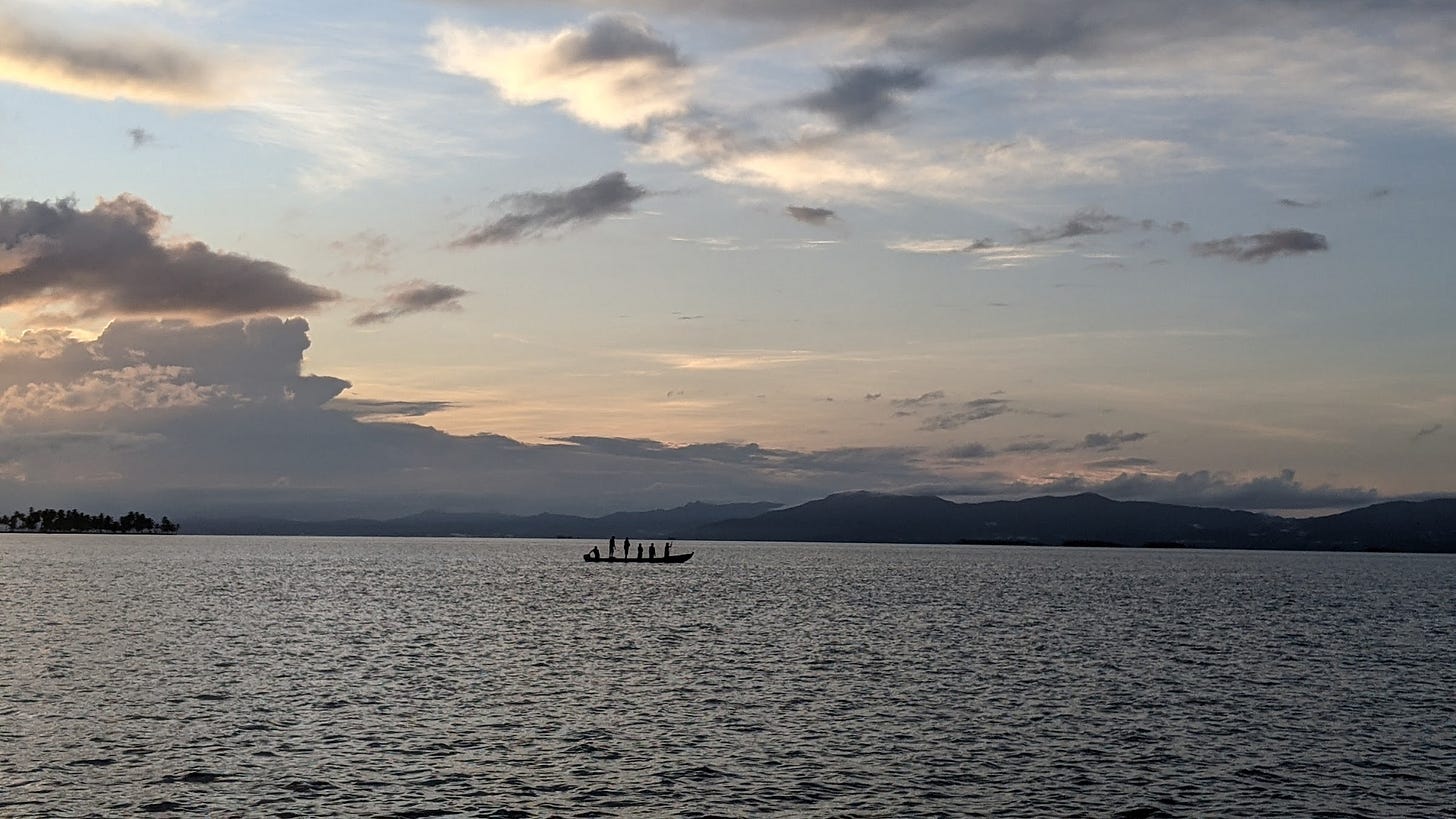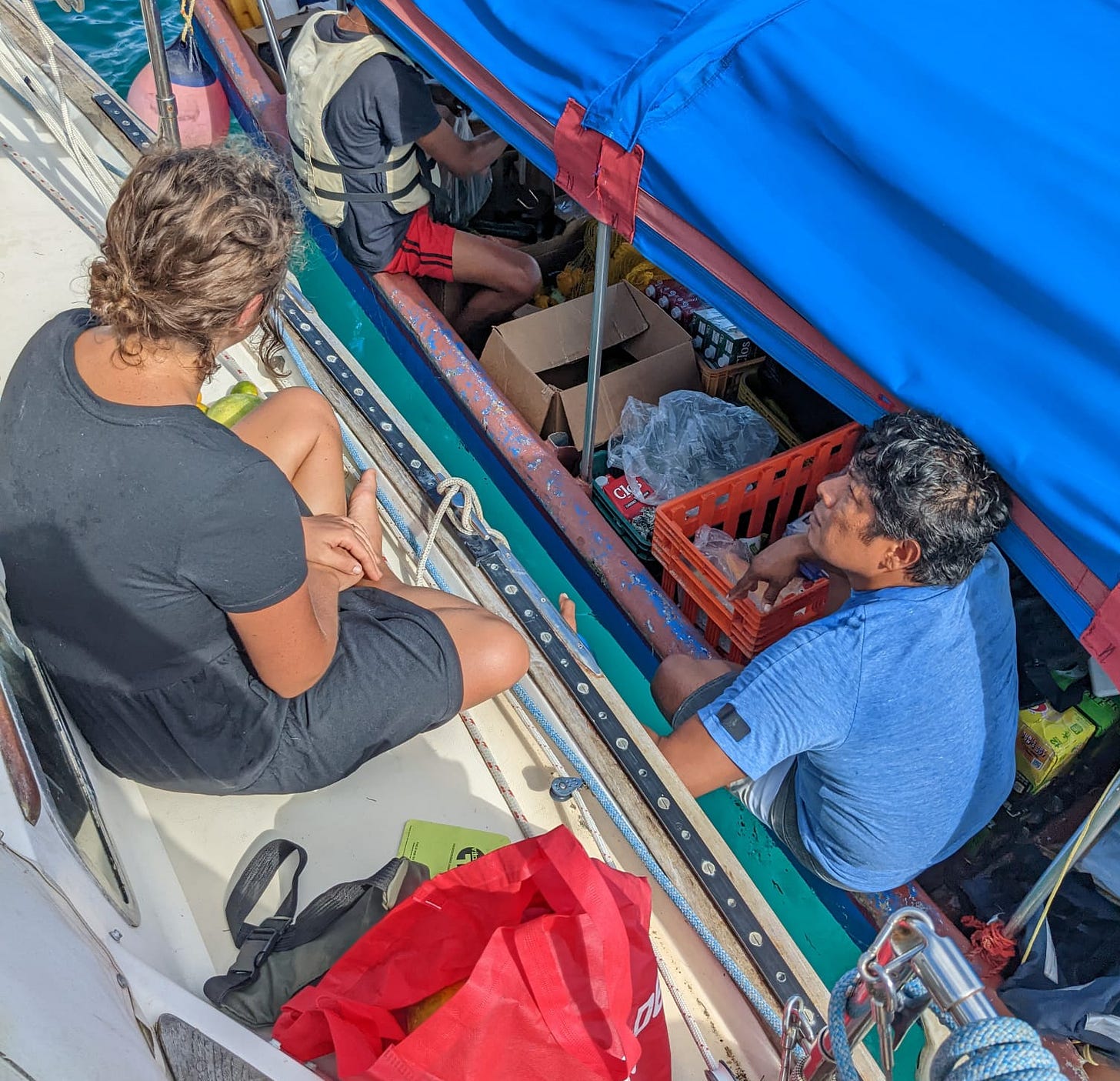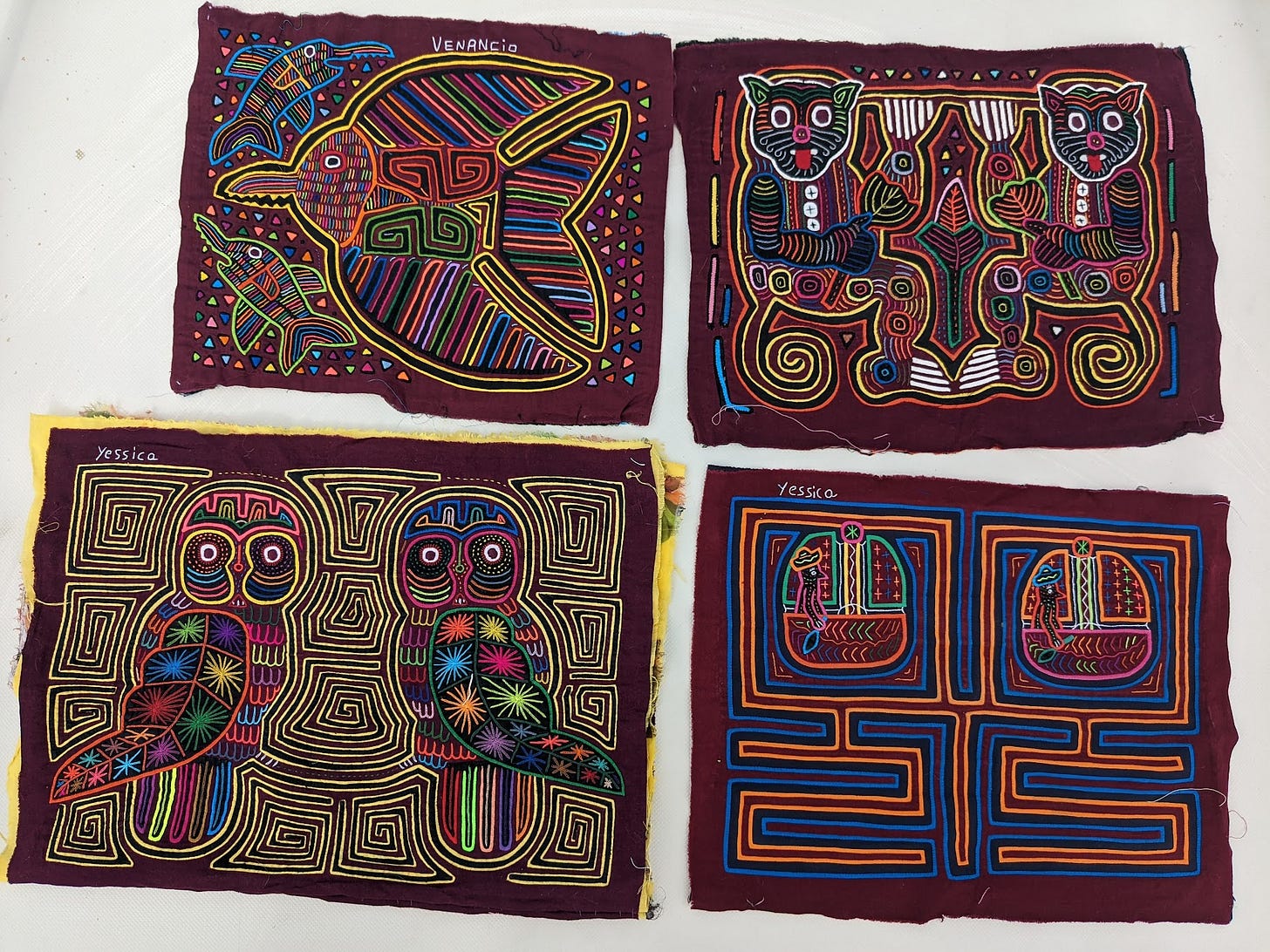Deep Economies
Grocery and gift shopping in the Guna Yala
This is Clouds Form Over Land, weekly writing about resilience, imperfectionism, and our relationship to the earth.
This time of year often comes with a hurried gathering of the food and gifts essential to our traditions.
A sort of dissonance settles between the myths of Thanksgiving taught in elementary school, the brutal history of Westerners landing in the Americas, and treasured time with loved ones.
Perhaps it’s fitting that we wade through these complexities in soup season.
We have spent the past few weeks in the Guna Yala comarca, a semi-autonomous zone in the coastal northeastern side of Panama. The Scottish tried to colonize this region in 1698 and Panama tried to pull the area into their jurisdiction in 1925 after the split from Colombia. The US interceded to back the Guna in a short rebellion. The people here have a different relationship to the concept of property than we do in “the west”, despite being longitudinally aligned with Florida. Fishing and gathering coconuts is prohibited by outsiders.
Paradise and resistance are intertwined with the sea stories and histories of these 360 islands. Climate change models predict they will be uninhabitable by 2050 due to sea level rise. The Guna people assimilated to a drastically different climate in the early 1800s when gold prospectors and other native groups pushed them out of the nearby Darien jungle, a place that currently acts as a dangerous foot trail for hopeful immigrants headed to the US. The first islanders have already evacuated back to the mainland.
The past and future loom large. This week I thought to go small and tell you about my grocery and gift shopping as you may be partaking in similar tasks:
Sea Wolf
There’s a boat crewed by five men of varying ages called Sea Wolf. They purchase supplies on the mainland, selecting fresh and dry goods that may catch the eye of anchored boaters, and then take a weekly loop around the islands. We encountered them near Banedup where they jovially tied up alongside us. The oldest man sat at the bow of the boat with a pad of receipt paper in hand, jotting down each selection. The two youngest scrambled on top of the goods, grabbing requests and shouting out other tempting offerings. The charasmatic entrepreneur sat near the back of the boat, switching between English and Spanish, while also doling out Guna words. A silent fifth guy sat at the back to maneuver the boat and its twin 40 horse power Yamahas.
We stocked up on essentials and a large bottle of coconut oil brewed by the wife of one of the crew and bid them adeiu, only to greet again on shore that evening at Orlando’s, the only restaurant in the islands to make the jump to Google Maps. They delivered groceries to Orlando, including a giant box of donuts, played several heated rounds of dominos, crashed upstairs, and continued the route the following day.
$5 fish
One evening I was taking what amounts to a sponge bath in the cockpit when I heard a call of “pescado, pescado!”. I dove inside and alerted Scott of our evening visitor. He purchased three fish for five dollars from the father and son duo in a dugout canoe called an ulu. We fried up the fillets for dinner and our cat Cypress had some in her bowl too.
Bottom cleaning and IT work
Two young men rowed by to offer boat work as we were beginning to weigh the anchor one morning. I had just scraped barnacles off the propellor and was excited by the prospect. We made arrangements to meet in the following day, which turned out to be a downpour. Antilliano arrived the following day instead, sans friend. He said he had an offer to go fishing and wasn’t interested in working. Fishing pays the bills too, but is in a category all its own.
Antilliano passed aboard his cell phone and charger. He asked for a glass of water and a few minutes of phone charging time, and then disappeared beneath the boat for two hours of scrubbing and scraping. This task cost $140 in California and $30 here, plus 8oz of water and a few watts from our solar panels. Antilliano then mentioned that his What’s App messages were not sending and asked for some help. I translated the issue and some backstory to Scott and he sorted out the error by assisting in recharging cell phone minutes and data. This is easy for us folks with bank accounts and debit cards, but requires a long trip to the capital island to purchase more minutes via a scratch off card.
Molas
The mainstay of the Guna Yala economy are molas, intricate reverse applicaed fabric creations of animals, patterns, and other parts of Guna life. If you perk up with interest, the seller will spend the next five minutes pulling out every mola they brought, asking for your interest in each one. They then go through the pile again, separating the ‘maybes’ from the ‘nos’. After that, final selections and prices are revealed — typically ranging between $15-45 per piece. We began offering glasses of cold water to accompany the show and tell. At a few visits, I’ve shared some of my embroidery work of much lesser skill and precision.
Some sailors speak of these bids for trade as a nuisance, others cloak their annoyance in advice to “be firm” when saying no. This is totally lost on me. We are guests in these waters.
I was thinking on how to wrap up this letter when Ernesto rowed over to sell some fish. I want to weave together my shopping with yours, alongside this tradition of celebrating a meal between pilgrims and indians. Since 1492, when Colombus sailed the ocean blue, 90% of native Americans were killed by violence and disease. When he arrived on the shores of Hispaniola, his water stores were low and locals helped him refuel. His journals are chocked full of generosities received and unclouded plans of conquering all.
This year we will have skipjack tuna instead of a turkey, a red fish that cooks up like a light steak when peppered. Ernesto filleted it using his oar as a cutting board and tossed in a small snapper as a bonus. We passed him some water and exchanged his hot beer for a cold one from our fridge. He planned to head downwind to Porvenir and rigged up a sail to give him a speed boost before untying from our boat.
Transactions are often the basis of cultural experiences for tourists. Restaurants, roofs over heads, tokens to bring back home. In the US where more and more items can be gathered without interaction, some culture and community is lost. We trade depth for convenience and gain debt and clutter. Many of our recent exchanges have included something easy for us to give alongside US dollars. A cup of rice, cell phone charging, some zipties, a unused tarp, or simply an offer to come aboard and look through molas in the shade, rather than looking down into their canoe.
This exchange of what you have for what you need is an opportunity for creativity and connection. Not everything needs to be liquidated to cash in order to trade.
*Deep Economy is a book by Bill McKibben and a seminar offered at UNC-Chapel Hill by Rudi Colleredo-Mansfeld in 2010 and likely other years. Both explore how non-monetary exchanges create close-knit communities.
Determine what native peoples inhabited the land where you live.
Explore this guide on land acknowledgement from the Native Governance Center.
Enjoy time with loved ones and don’t get stuck on personal differences.
Start a conversation in the grocery store check-out line.
Written in the spirit of not letting what we can’t do get in the way of what we can.
Did you try any of these? I’d love to hear about it in the comments.





❤️❤️❤️❤️❤️